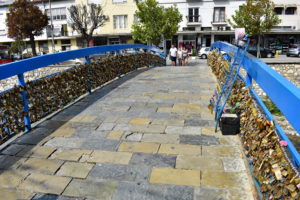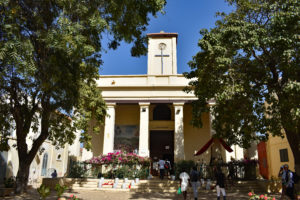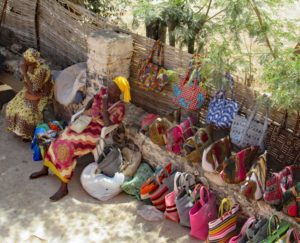Whilst sailing with “Variety Cruises”:https://www.varietycruises.com/ on their “Rivers of West Africa”:https://www.varietycruises.com/cruises/west-africa/west-africa-rivers-of-west-africa-dakar-to-dakar cruise, we had a brief city tour of Senegal’s capital, Dakar, before heading out by ferry for lunch and sightseeing on Gorée Island.
Tickets for the 3km, 30-minute crossing cost 5200 West African CFA Franc (£6.56) and as they are sold on the day, we had to be there early to be guaranteed a seat on the 340-passenger ferry. Nearing the island, the ferry skirted round a buoy, which marked the spot where a Dutch ship, carrying cereal, sunk in 1962. It’s now popular with scuba divers.
UNESCO claims the island was the largest slave trading centre on the African coast between the 15th and 19th centuries and the surrounding shark infested waters ensured there was no escape. The island was ruled by the Dutch, English and French with the painted houses in pink, yellow and white respectively, denoting their origins. There are now about 1800 inhabitants living on the island, which attracts significant numbers of day visitors.
After lunch, we set off on foot, this is a car free island, and stood in the spot where Presidents Bush, Clinton and Obama addressed the people in 1998, 2003, and 2013. Near a baobab was a statue commemorating 20+ doctors who had died during an epidemic in 1828 and the first building on the island built in 1444 by the Portuguese, now a police station, but in previous incarnations it had been a store and then a church. We saw the Garden of Gorée where one donkey takes care of any rubbish. A statue of two slaves, le statue de la libération de l’esclavage, was erected by the people of Guadeloupe in 2002.
Having walked around the narrow streets with their dusty paths and colourful arches of bougainvillea, we visited the la Maison des Esclaves (House of Slaves). On entering, men and women would be immediately separated with men turning right and women and children left. The small claustrophobic rooms had one tiny window, shaped like a funnel to prevent the slaves escaping. Each would have housed 15 to 20 men in chains that bound necks, ankles and feet. They were only released once a day to go to the loo on the shore. The value of a man was 1 brandy, or 1 rifle and each man had to weigh 120lbs, otherwise he would not be strong or fit enough to work. Those underweight were put in a separate area and fed on beans, cous cous and fish for 7 days to fatten them. Children of 9 years old and above, were valued at a mirror and were kept in a separate room before being transported and used for cotton picking due to their small fingers. Ladies were divided: virgins, designated by firm breasts, and others. The virgins were the only ones to have a toilet as the masters who lived above, may want them for ‘jiggy jiggy’. A virgin was also valued at one brandy. If the virgins became pregnant, they were kept on the island as domestic slaves, as were the men who didn’t fatten up. Rebels were kept in a small, damp, windowless room that lay beneath a stairwell, called Cellule des Recalcitrants. It would have housed 6 men, and few were said to have emerged alive: Nelson Mandela was reduced to tears on his visit. We saw what was called the ‘Door of No Return’ where an estimated 20 million African slaves passed through to board the ships.
Outside, we continued our walk around: Blaise Diagne House, the former home of the political leader; Mariama Ba Girls School, named after the author; Catholic Saint Charles Borrowmée Church, built in 1830; and a sign naming the African leaders who had studied at the original Ecole William Ponty Gorée.
We then had free time to look at the craft shops and avoid the traders who continually follow and harangue you with their goods. We’d been told by our cruise coordinator, that the best way to repel the traders was to say, ‘not today’, or ‘maybe tomorrow’. Personally, we found it better to say no thank you, not engage in eye contact and keep moving as they always had a response: when a fellow passenger said a wooden turtle was too large, he returned with smaller ones. Some were particularly persistent if you didn’t engage and many go over on the ferry, befriend you and insist you visit their shop.
My cruise was booked through “Seafarer Cruising and Sailing Holidays”:https://www.seafarercruises.com/.










